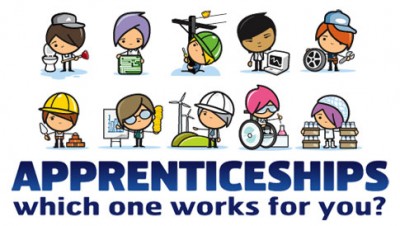Everything You Need to Know about Apprenticeship in Pakistan

posted:4 years agobyAwatef Hamdiin Getting Started
Skills can be acquired through classroom learning, social experience, training, and many other learning sources. An apprenticeship can be a part of any professional training system. It allows gaining both qualification and workplace experience. In Pakistan, apprenticeship is a system in which an employer trains a young person for a specific duration that has been fixed in a contract. This apprentice person is bound to work during the period of apprenticeship under a signed contract.
1. Apprenticeship Vs. Internship

There is a difference between apprenticeship and internship. Apprenticeship is generally done without a considerable process of academic studies. Apprenticeship is based on a contract between the employer and the apprentice under the supervision of a controlling authority for a specific period. However, there is always a limited number of apprentice-able trades because the current apprenticeship law is only applicable to the industrial sector related to production rather than commercial and service-related establishments.
The internship is done for different purposes. It is usually associated with education. For example, placement is more related to students who are supposed to do an academic project. It is generally done as a part of the course curriculum for a certificate. Unlike apprenticeship that lasts for a more extended period, an internship is for a short duration, which takes between a few weeks to several months. A student is not paid during the course, while an apprentice is paid a stipend. The apprentice is supposed to acquire skills through hands-on training, while internship students are meant to learn the practical application of theoretical studies that help them apply for an official job in the field.
What CV Format for Internship I Need to Use?
How to Apply for Apprenticeship
No higher qualifications are required in industrial establishments. In other countries, the minimum educational level is related to professional studies in trade or craft. There are institutes providing diplomas that vary from trade to trade, based on short term schooling. Apprenticeship is designed for young workers, whose age varies between 16 to 26. Apprentice age has also extended to 18 as a minimum fundamental requirement entry-level. The percentage of hiring apprentices is very high. If an apprentice has the appropriate age of apprenticeship, he can apply for that through a resume. Then, once the employer approves the application, there will be a contract or an apprenticeship training agreement.
2. Recruitment Process

Hiring an apprentice is not only based on the period of training. It also requires a set of different procedures. First, recruitment depends on vacancies and demands for apprenticed workers. Apprentices who have perused an educational qualification or licensed from craft schools are on the top list of recruitment rather than uneducated apprentices. Also, employment for foreign countries is always open for experienced apprentices, who can apply for Gulf countries, European industries, or any other place in the world. Some employers, especially very famous and big industries, hire apprentices after a written test and after interviewing candidates. Once an apprentice is hired, he can get a contract to sign, which includes employment rules.
3. Apprenticeship Contract
The apprenticeship contract includes the details arranged between the employer and apprentice. The signed contract can't be modified or amended later without prior approval from authorities. The apprenticeship contract includes the training period, which is decided in advance. The majority of the employer can determine the duration of this period in the job description. This duration depends on the nature of the job description. The time required by the beginners to get enough skills, especially for those who don’t have a diploma or a previous license in theoretical training. Therefore, the period of apprenticeship varies from one apprentice to another depending on the origin of the apprentice, whether he is educated before or not. In the end, apprenticeship period ranges from six months to three years.
4. Benefits of Apprenticeship:
1. Ensured Employment: There are many benefits related to an apprenticeship. First, the end of apprenticeship leads to final employment. That is, whatever the apprenticeship task is, it opens access to all industrial establishments (involved in production). The apprenticeship law provides recruitment to at least a quarter of total persons employed in trade apprenticeship in industrial establishments. This law is only applicable to large employment sectors, who hire more than 50 workers. That is, apprenticeship is fit for industrial concerns, which includes numerous workers.
2. Costs: Another benefit of the internship includes training costs. Apprenticeship costs depend on the employer’s program, which is based on two components
- · On-Job-Training (OJT)/Theoretical Instruction
- · Off-Job-Training/Practical Training

The majority of an apprentice's working hours are devoted to practical training. A small portion of time is required for theoretical instruction that operates in training centers and vocational training centers. At the end of apprenticeship, an employer can assign a written test for apprentices to see whether they have mastered all the skills of practical and theoretical training.
The apprentice stipend is paid, whether weekly or monthly depending on the employer, the intensity of working hours, and seniority. During the first year, skilled workers get 50 rates 50%, while this amount increases gradually through time, reaching 100% after achieving three years of apprenticeship.
Apprenticeship Job Offers
Apprenticeship provides many job opportunities in industrial work, mechanical work, and even in the technical field. These jobs can be available in both the state and private sectors. In the case of the private sector, apprentices cannot guarantee permanent work because professional consistency depends on many factors. For example, if the private project went bankrupt, employers cannot provide compensation for apprentice workers. Therefore, apprentice workers should pay attention to which sector they should operate. Get hints about future jobs from here:
10 Best Jobs for the Future - Let's Not Worry About Future Income Stream
